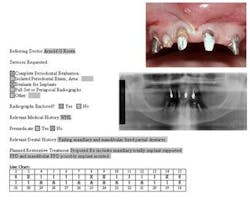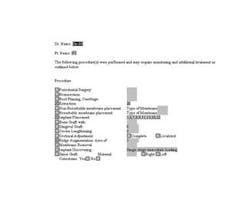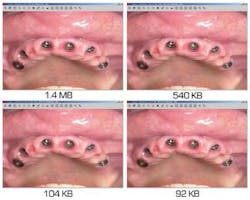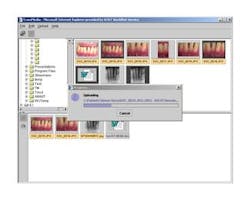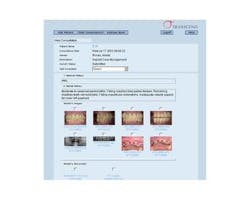'I could write a book…and I often do…':Part 2
by Jean A. Sagara and Arnold G. Rosen, DDS, MBA
Dr. Arnold Rosen shares his experiences with implant case management and dentist-to-laboratory communications.
In Part 1 of this two-part series on implant case management (see September Dental Economics), we reviewed some of the realities of implant dentistry, one of which is a treatment timeline that often extends from six months to two years. We also touched upon a constant theme in our year-long series examining dentist-to-laboratory communications: how to maximize outcomes and incomes by being more productive. It is absolutely essential to have exquisite documentation and effective communication with implant-case team members. We learned the importance of core administrative skills to reduce opportunity costs. There is no substitute for doing it right the first time. For these reasons and more, the control of implant treatment and other types of multidisciplinary care requires the kind of procedural steps that only good project management can yield.
Dr. Arnold Rosen was our guest writer for Part 1. As a maxillofacial prosthodontist with experience in academic settings and clinical practice, he comes to the subject with considerable knowledge of complex restorative dentistry. He understands firsthand the factors that are critical to success. He concludes our implant case-management study with this article. Dr. Rosen will offer guidance on how practical tools and new technology can augment and advance outcomes for implant care. Our goal remains the same: to advance communication between the dentist and the lab. We acknowledge Dr. Rosen's bias for technology-communication platforms and their proven success for him and his patients.
Project management that spans months, even years, and includes multiple caregivers in multiple locations cannot be managed optimally without accurately recorded data. The data also must be shared in a cost-effective and timely manner. Let's discuss the tools we need for documentation, the formats that are easily stored and shared, and the programs that complete the networking process with the assurance of security and simplicity.
Documentation
Documentation must be done from the beginning, and it can take many forms. Images of the patient at the first visit and at critical treatment stages, as well as radiographs of existing conditions and at treatment milestones, are essential for the team to stay current regarding the patient's treatment status. Accompanying these images should be text documentation in the form of initial observations, referral forms, planning documents, treatment reports, and routine communications, all of which are essential for treatment-team participation. Other forms of documentation may include CT scans and computerized simulations.
What do we need to get started?
To take advantage of technology, we need tools to acquire and organize digital information. These tools include items that are familiar to most of us:
- Word processor
- Digital camera
- Intraoral camera and other video devices
- Digital radiography
- Scanners
- User interface (UI) or Digital file editor
Word processor
The word processor provides tremendous flexibility in creating custom forms with check boxes and drop-down menus to facilitate ease of use. Well-conceived forms can be filled out faster than hand-writing a narrative or sharing information through phone calls. These forms have the added value of providing a permanent document of referral and consultation transactions, and they are easy to email or access via a virtual private network. Most importantly, a form that is created in a commonly used software application, such as Microsoft Word™, can be shared among treatment-team members. This is accomplished without regard to the practice-management software residing on the team member's office computer or any customized software programs designed to track treatment for an individual caregiver.
I used one such referral form on a patient to initiate communications between my practice in Chestnut Hill, Mass., and Drs. Marvin Rosenberg and Jeff Ganales in Boca Raton, Fla. The form can be generated once, and then shared with multiple caregivers in multiple locations through secure online networking. The form provided the following information:
- All specialties involved in the referral process
- All services that might be included in the project management of the patient's multidisciplinary care
- Documentation of the final treatment plan or preferred treatment outcome
In response, Dr. Ganales used forms programmed in Word to document treatment recommendations and the surgical report, which provided information on what implant types and sizes were placed in which locations.
Effective networking allows team members to view all treatment recommendations and respond without making numerous phone calls and hand-writing notes. It is efficient, takes only one transaction for several parties to access and benefit from, and the data can be securely stored as a permanent record.
To receive copies of the forms in digital format, contact Jean Sagara at [email protected].
Digital camera
The digital camera is a critical instrument for diagnosis and case management. It should be a serious case-management tool in the dentist's armamentarium. For that reason, give careful consideration to your camera purchase so that you can maximize its value in your practice. Several companies have attempted to penetrate the dental market with digital cameras by taking consumer products and making them appear to address the concerns of practitioners. More often than not, it is to accommodate the manufacturer's perception of price-point requirements held by dentists. Moreover, many camera manufacturers believe that dentists will use the digital camera only as an instrument to take pictures of smiling patients. They mistakenly think clinicians want a camera for simple use. In my view, this is not the case.
It is not the purpose of this article to rate cameras. Suffice it to say, "garbage in, garbage out" is particularly true in digital photography. In addition, the pixel rating often is not the most relevant specification for a digital camera. Other characteristics are far more important in a dental office. In fact, a pixel standard can become a liability rather than an asset.
Other devices, such as intraoral cameras, also can be used to document a patient's condition, but they do not have the diagnostic potential of a still digital camera.
Digital radiography
The patient image and scanned panoramic X-ray accompanying the referral form reside on a virtual private network hosted by the TransNet™ Internet-based software application. This private-network digital system provides security and privacy for authorized users. While the digital radiograph is gaining in popularity, it still does not provide the information contained in a conventional X-ray.
Scanners
Scanners can be used for digitizing patient pictures, 35mm slides, and conventional X-rays. The flat-bed scanner with a transparency adaptor provides outstanding images for digital documentation and document-sharing. Today's flat-bed scanner, priced well under $1,000, cost several thousands of dollars just a few years ago when teleradiology first became an area of interest. As with other technology, the price has gone down and supply has increased.
User interface
The user interface bridges devices to acquire, organize, and preview data; annotate; and reformat and create copies. It also supports ICC profiles to better maintain the integrity of color information. One also can use it to export data to email and Internet-based programs for easy communication to advance project management.
Having collected the information and stored it in my local computer and/or on a local office network, I now have the task of making the information available to my colleagues. The user interface allows me to review the digital documents in a patient's folder, drag and drop to a worksheet, and upload the files to the virtual network.
A virtual private network
My data acquisition, organization, and review — plus the eventual upload or export — is accomplished with the TransMedia™ software program. Everything is uploaded to the Dentist Rx Online™ and TransNet™ networking software programs.
Networking can be accomplished in many other ways, of course, including the telephone, snail mail, email, and Internet-based groupware (software). I should disclose that my familiarity with these products is no accident. Together with our team at Transcend, Inc., these Web-based communication and networking tools were developed to enhance clinical communication for multidisciplinary clinical teams, notably labs and dentists.
The phone requires time and discipline. Snail mail requires multiple copies of documents, such as X-rays and mailed forms. Users must record administrative transactions and document follow-up or additional phone calls. Email has many of the same limitations of snail mail in that communications are not documented in a form useful for project management. Attached data must be stored and rerouted for other caregivers. Moreover, responses and other data are not easily shared with all team members in an orderly format.
Documentation and project management on my patient began with communication to a lab (see Part 1 of this series in the September issue of Dental Economics). We initiated our documentation, estimated the cost, and reviewed the case design. This document ultimately became the prescription for case fabrication, which is now in its final stage. Referral and case management were accomplished by using digital data and a virtual private network hosted on the Internet. Consequently, the mountains of communications are condensed into a single interface. This same document will serve me, my patients, and my colleagues well.
I no longer believe that networking is in the future. Networking systems and tools are becoming familiar and sought after. Their adoption is further along in certain industries than in others, but the key is how well-designed they are for easy use. When it becomes clear that they can eliminate repetition, replication, and redundancy, they make their own case. These tools can improve the quality of care in dentistry, and they are beginning to find an audience. Some big players, such as IBM, believe that digital networks should be viewed much like a utility. In their marketing, Big Blue sounds like a power company selling electricity. They are betting their future on Web networking as an essential business tool — not to replace, but to augment and empower communication. IBM gave us the personal computer back in the 1980s. The company has exhibited 20/20 vision for much of the time since.
The question for the dental industry is not can we afford the tools to network, but can we afford not to have these tools? I have answered that question for myself. Together with my patients and colleagues, we are reaping the benefits of networking. I predict that the vast majority of you will be hooking up to this new utility any day. Case-management opportunities will follow and expand proportionate to patient satisfaction.
